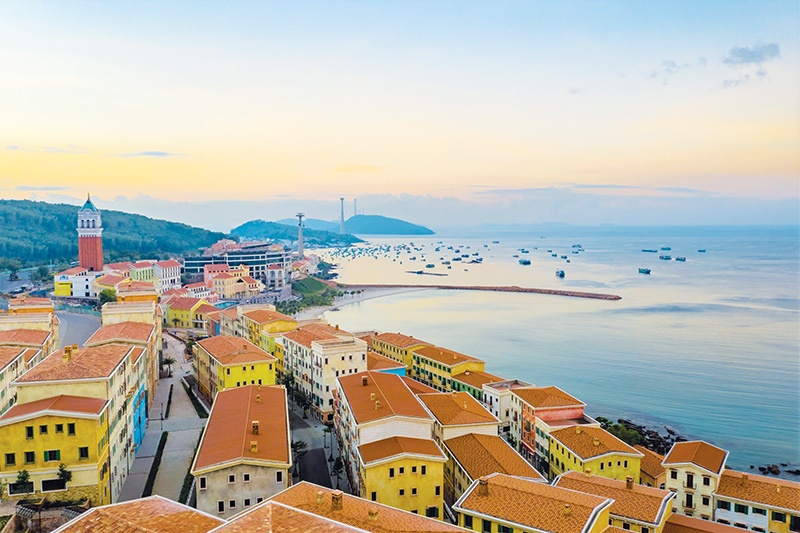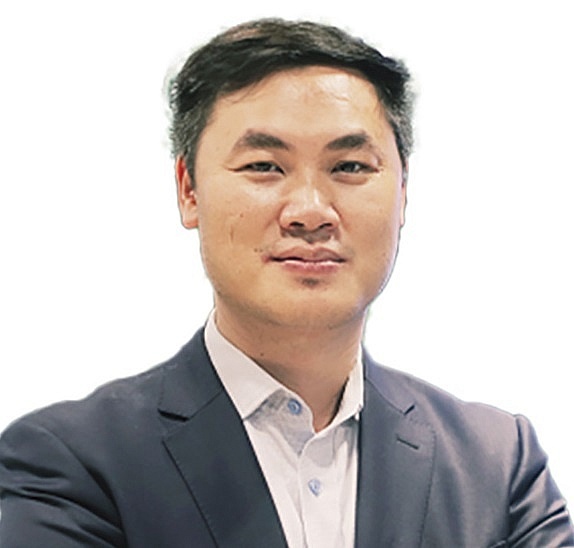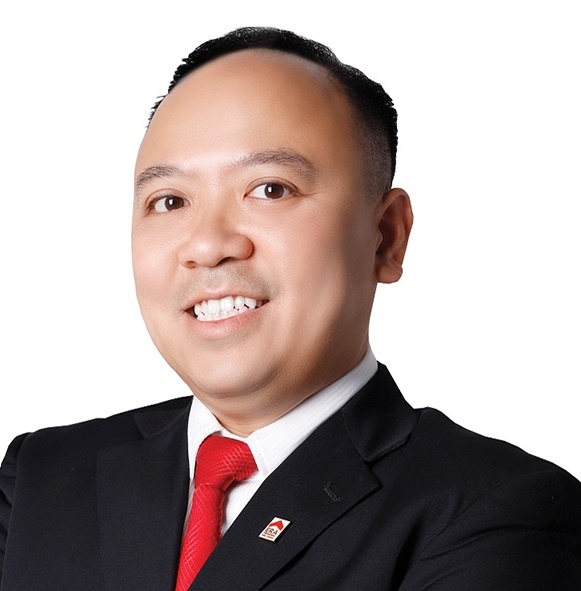Virtual solutions leading snazzy new property era
 |
| Second home properties are not the aim of investors only, but for end-users wishing for a new style of living and working. Photo: SUN GROUP |
“The market post-pandemic should be very interesting with 80 per cent of buyers now keeping their cash in pocket and ready for new transactions. The rest are looking to re-sell their products to balance their finances because they could not afford the interest anymore after the long social distancing measures,” Quang said.
Developers are now driving their portfolios to satellite cities with hundred-hectare projects to develop high-end urban development areas with many value-added services. Customers, therefore, are also turning their interest to those projects when investment in the inner city areas is challenging because of limited projects.
According to Quang, with profit from investment in central areas of Ho Chi Minh City at 15 per cent per year, investors can expect as much as 30 per cent in satellite cities.
“This explains why many real estate giants in the city and even in other countries are moving away from the city centre,” Quang added. “Projects located in a nice climate with water-based areas, garden space, and around 60-100km from Ho Chi Minh City funded by prestigious developers continue to attract a lot of buyers. Projects which can be handed over to buyers in 2023 and afterwards with flexible payment policies will be popular.”
After this year’s problems subside, virtual mock-up homes and online trading activities could be continually used by developers to approach their potential customers before they can directly visit their aimed projects and give the final decision. Also, technology could allow customers to design their apartments and villas by themselves before talking to consultants from professional experts.
Meanwhile, virtual offices are offering an opportunity for many small- and medium-sized enterprises that can have an office for operating their business activities without having to pay large office rental fees.
These virtual offices permit staff to carry out their activities via a virtual online platform such as meetings, calls, customer service, and many others. The long-lasting pandemic is making enterprises adapt to work-from-home methods and this type of office would inevitably be more economically suitable for them.
After each wave of the ongoing pandemic, Vietnam’s real estate market bounced back very quickly. This is a bright spot of confidence in the economy and Vietnam’s potential real estate boom.
For the longer term, the demand for mid-range and high-end real estate in Vietnam will continue to increase.
End-users will continue to pay attention to apartments and houses in cities. Investors and speculators, meanwhile, will focus on landed houses and plots, especially in the northern market. Resorts and second home properties will come back to fever soon. Second homes in outskirt areas and provinces remain hunted by high-income earners, while coastal second homes and resorts are primary targets for higher-income earners, including international investors and buyers.
Industrial property, suburban development areas, and urban resort areas have been the hottest segments for developers and investors during the past year or two. However, the current implications have also made changes in the choice of customers when many of those are driving their interest into satellite urban and resort wellness projects.
This segment has a lot of room for growth and could be developed strongly in the future due to the recovery of the economy and the return of tourism development. Although developers now face difficulties in approaching buyers, the future of this segment is still bright.
I think that second homes could be a focused trend post-pandemic. In Vietnam, with a strategic location in the region, more natural landscapes, and reasonable real estate prices compared to many other neighbouring countries, resorts and second home properties should be stable during the time. In particular, second home properties now are not the aim of investors only, but for end-users also. There is now a prestigious opportunity for people to think of having a second home not just for relaxing, but also for a new style of living and working.
Due to the limited supply, only some of the second home projects in the central area are now on offer, especially coastal and long-term ownership projects. Despite demand being reduced to its lowest level, absorption could be increased at the end of this year when the pandemic is controlled and a higher number of people are vaccinated.
Investors, meanwhile, also need to have a long-term vision to come into the real estate market so they can utilise lower interest rates from the bank and a lower price offered by developers.
| Vu Cuong Quyet - CEO, Dat Xanh Real Estate Services
After each wave of the ongoing pandemic, Vietnam’s real estate market bounced back very quickly. This is a bright spot of confidence in the economy and Vietnam’s potential real estate boom. For the longer term, the demand for mid-range and high-end real estate in Vietnam will continue to increase. End-users will continue to pay attention to apartments and houses in cities. Investors and speculators, meanwhile, will focus on landed houses and plots, especially in the northern market. Resorts and second home properties will come back to fever soon. Second homes in outskirt areas and provinces remain hunted by high-income earners, while coastal second homes and resorts are primary targets for higher-income earners, including international investors and buyers. | |
| Nguyen Duc Chinh - Deputy CEO, CenLand
Industrial property, suburban development areas, and urban resort areas have been the hottest segments for developers and investors during the past year or two. However, the current implications have also made changes in the choice of customers when many of those are driving their interest into satellite urban and resort wellness projects. This segment has a lot of room for growth and could be developed strongly in the future due to the recovery of the economy and the return of tourism development. Although developers now face difficulties in approaching buyers, the future of this segment is still bright. | |
| Huynh Thanh Hai - Deputy CEO, ERA Vietnam
I think that second homes could be a focused trend post-pandemic. In Vietnam, with a strategic location in the region, more natural landscapes, and reasonable real estate prices compared to many other neighbouring countries, resorts and second home properties should be stable during the time. In particular, second home properties now are not the aim of investors only, but for end-users also. There is now a prestigious opportunity for people to think of having a second home not just for relaxing, but also for a new style of living and working. | |
| Hoang Thi Thuy Giang - CEO, PeakHomes Real Estate Investment and Development
Because of the limited supply in the country currently, only some of the second-home projects in the central area of Vietnam are now on offer, especially when it comes to coastal and long-term ownership projects. Despite demand being reduced to its lowest level, absorption could be increased at the end of this year if and when the coronavirus pandemic is controlled and a higher number of people have received a vaccination. Investors, meanwhile, also need to have a long-term vision to come into the Vietnamese real estate market so that they can utilise lower interest rates from the bank and also a lower price offered by developers. |
What the stars mean:
★ Poor ★ ★ Promising ★★★ Good ★★★★ Very good ★★★★★ Exceptional
Related Contents
Latest News
More News
- Sun Group breaks ground on $2 billion Van Don casino complex (December 19, 2025 | 18:14)
- Rare, beautiful, sustainable: the mark of iconic real estate (December 19, 2025 | 08:00)
- Owner-occupied housing stabilises, paving the way for new growth cycle (December 18, 2025 | 17:04)
- Unlocking urban potential of smart cities (December 18, 2025 | 16:50)
- Green finance offers 'passport' for Vietnamese construction, building materials firms (December 15, 2025 | 08:00)
- Gamuda Land commit long-term investment (December 12, 2025 | 11:49)
- HITC ties up with Evolution to develop AI and hyperscale data centres in Vietnam (December 11, 2025 | 12:09)
- Real estate deals boom via high-profile names (December 08, 2025 | 11:32)
- Industrial segment shaped by M&As (December 08, 2025 | 08:00)
- The Privé sets the benchmark for luxury real estate (December 05, 2025 | 08:28)





 Tag:
Tag:




















 Mobile Version
Mobile Version